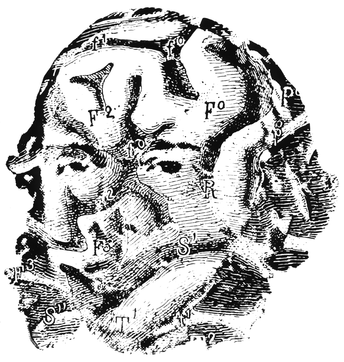Pierre Paul Broca1824–1880
With a growing understanding of the gross and fine anatomy of the brain, attention was directed to the functions it served. The debate between the localizers and the equipotentialists reverberated throughout the 19th century. Broca provided evidence from clinical examination and autopsy to support cerebral localization of function. He was initially influenced both by comparative anatomy and by Gall’s speculations on cortical localization. Such evidence was not new but Broca’s views were treated with greater seriousness by the scientific community because he was not tainted by phrenology. Gall had described the case of a patient with a sword wound, lesioning the anterior left lobe of the brain, who lost his memory for names. Other cases were to follow, but Broca’s was the most timely. In 1859 he was involved in founding the first Anthropological Society at Paris, and this was the platform from which his most noted work was delivered. During one of the early meetings of the Society arguments about the relation of brain volume to intelligence led to discussions of brain localization and speech. At that time Broca was treating a patient suffering from loss of speech, referred to as aphemia by Broca and later as aphasia. The patient was known as Tan since this was the only utterance he made, but he was able to understand speech. Tan died one week later and his brain, which was exhibited at the next meeting of the Society, was found to have a cavity in the left frontal lobe. A second patient with similar symptoms had “a profound, but accurately circumscribed lesion of the posterior third of the second and third frontal convolutions”. This is now referred to as Broca’s area or Broca’s convolution. Broca provided a more intricate analysis of language than simply localizing it in a particular part of the brain, as had the phrenologists: “The nature of that faculty and the place to which it should be assigned in the cerebral hierarchy could give rise to some hesitation. It is only a kind of memory and have the individuals who have lost it, lost only, not the memory of the words but the memory of the procedure which one has to follow in order to articulate the words?”. Despite disputes regarding the priority of Broca’s discovery and the extent of the lesions in his patients, the link forged between language and cortical location proved very fruitful, and led others like Wernicke to relate the receptive aspects of language to more posterior locations in the left hemisphere. Broca was born near Bordeaux and spent most of his life in Paris, where he became professor of clinical surgery. In the last year of his life he was elected to the Senate as a representative for French science. Broca was a prolific writer and published over 500 scientific papers, as well as several books. He is shown in a diagram of Broca’s area, taken from an illustration in his Mémoires sur le Cerveau de l'Homme et des Primates (1888).
